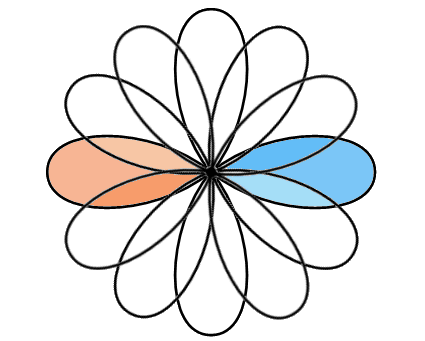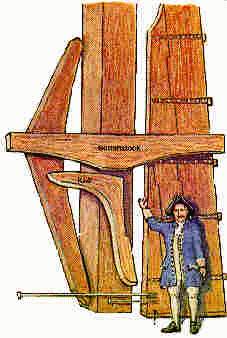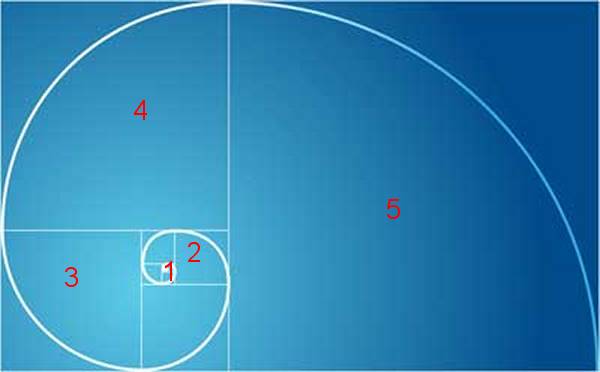
Over the years I, and certainly also Anders, have got many requests to help start interesting and often smaller projects than building an East Indiaman and sailing it to China and back. All these enthusiasts also don't take 'no' for an answer so let me put it like this. Almost anything is possible but it is not easy and it takes a kind of dedication that is almost not healthy, and it is only those who live to tell the story that you'll ever hear off.
Those who don't make it, is the kind of people you find deep frozen into glaziers and such, after trying to drag home a deflated baloon from the North Pole. You know the kind.
With nothing tangible to show initially, we relied heavily on imagination to help people envision a Swedish East Indiaman being built. My focus was on introducing onboard food and its cultural exchange aspect, not just to sell the idea of rebuilding a replica but to ignite passion for it.
Our strength lay in the personal network of thousands of Swedes and numerous local businesses, organized by Anders and Berit Wästfelt into the 'Friends of the Gotheborg' organization.
The first challenge was financing the construction of an 18th-century oak frigate. Our starting point would be events and guided tours of the shipyard, as soon as we had one. The second challenge involved the project's long-term nature, split into the shipyard phase and the sailing phase.
We learned that few companies were willing to commit far in advance. We were advised to return when ready to sail for further discussion. This feedback was valuable, though not immediately very helpful.
Between 1992 and 1998, we created this project from the ground up, without being hired by anyone. Yet, people often assume it must have been a government-sponsored project or at least initiated by the city of Gothenburg. It was not. It started as a completely private endeavor and remained so for a long time, even after its maiden voyage to China and back. It has always been, and still remains, a completely private venture.
From my individual point of view, to be an active part of laying the groundwork and establishing the organization, some initial funding was needed. I had some personal savings and could do some paid work on the side. That is what volunteering means and it takes some judgment so you don't over stretch.
More importantly, at this time, Anders was celebrating his 50th birthday and asked all friends to direct their potential gifts toward a '50th year birthday fund' from which seed money could be drawn. This money went into the stock capital, enabling the registration of SOIC AB.
The final years of the excavation period had been spent promoting the idea of building the Gotheborg III and preparing for this venture. Now was the time to ask everyone to contribute towards this purpose, and they did.
When you are invited to join a project or get hired for that matter, you bring your entire background, expertise and network with you. That went for all of us who made up the Management Group and is a given in any project, but what set this project apart from anything else and that we could not have made without, was the goodwill capital that Anders and Berit brought into the building project from the preceding excavations!
It was this Goodwill capital, along with our own entertaining 'talk shows', lectures, Anders called them, that we could capitalize on until we had at least a hull that started to look like it could become a ship. Our expectations were modest, but we needed to be realistic about when to expect any real sponsors to step in. Ideally, everyone would have preferred to decide whether to help, not earlier than when the ship was at least moored at the quayside.
Early crucial funding came from the Friends of the East Indiaman Gotheborg Organization, where Berit had successfully attracted many private individuals and companies during the excavation phase. This was for those who wanted to contribute and feel a part of the adventure, while staying informed without dedicating too much time and attention. This initiative was Berit’s 'baby', remaining the only reliable source of funding for essential needs like grants, salaries, or necessary purchases.
It also became a source of voluntary assistance for tasks such as clearing the shipyard area before construction could begin. The organization rallied thousands of sponsors, sponsoring companies, and volunteers who were willing to help out for free. This support was based on the goodwill and popularity generated by previous excavation and exhibition activities, and on the trust we eventually earned through our actions that, eventually, there would be a ship
After the initial groundwork, we rented a section of the former Eriksberg shipyard industrial wasteland. The cost was a nominal 100 SEK per year, covering the duration of the project, and with that, we got started.
Once the plot of land we needed was secured, the next step would be to find the necessary specialists and, with their help, create an organization robust enough to bring our vision to life. The logic in a project like this was straightforward. We asked, 'Do you believe we can achieve this? If so, are you willing to wait for payment until it succeeds? If you don't think we can make it, then why join this group?'
That was the crux of it. Financial security was non-existent, obstacles were numerous, rewards uncertain, but the chances of great adventures were almost certain. Success depended solely on ourselves. Who wouldn't jump at such a proposition?
Back in 1993, we had hoped that the members of the foundation we established would leverage their reputable names and extensive networks within the Swedish business community and the regional community at large to secure the necessary funding. We anticipated that we could get started more or less right away. Unfortunately, things did not unfold as planned.
To get the whole thing going, there were a lot of things that needed to be funded. The various sources we could approach were, from top to bottom:
|
However, the likelihood of successfully securing any support was pretty much the same list, but starting at the bottom with 'Ourselves' and decreasing as we moved up the list.
You could also sort this list of potential sponsors into groups: Community, Corporate, and Private. And further divide the project into two phases – 'Boat on Land' (Shipyard phase) and 'Boat in Water' phase – showing that the funding possibilities were numerous but needed some thinking, as any access to an 'event area' would differ for each phase. While it was clear that most sponsors would have wanted to have some form of physical access to the ship, and that it was clear that we would not be able to provide enough of that to finance the whole project, this necessitated the definition and sale of by and large intangible products, tailored to each group.
It was clear that the fundamental function of a ship is transportation, but this alone was insufficient to provide a feeling of ownership to the sponsors. Therefore, we needed to offer value in other forms, recognizing that the tangible ship alone couldn't meet everyone's needs. We needed to give back more than 100 percent – much more. To explain how we did this, we used what I called our 'Sunflower Model'. This model, with its overlapping petals, represented the multiple values we aimed to create for all the groups we needed.
I likened the project to a sunflower, where each petal symbolized a different activity or value, and that each sponsor could have any number of petals (values) each. This model with overlapping petals allowed us to stretch the project's total value so that everyone could have a much larger share than as if you were thinking of it as pieces of a pie.
The values of culture, history, trade, media, education, rehabilitation, recreation, sustainability, environment, community, food, and research, among others, could all easily overlap and even strengthen each other.
Reflecting on the significant role of the 18th-century Swedish East India Company in society, I found joy in meeting potential sponsors one-on-one or speaking from a stage, expanding on how almost anyone could connect with this project and benefit from associating with it.

From the outset we had decided that a large number of objectives would benefit from our ship project.
By explaining the individual value to each and every group and sponsor - how specifically they would benefit from an association - we could enlarge the values of the project to much more than if you were thinking of it as pieces cut out of a pie.
Based on this model we could tell anyone interested in for example ancient sail making or astronomical navigation, ship's medicine or wood carvings or people that just like wooden boats or sailing, that the project was aimed at exactly giving them a ship to play with.
It was also possible for the City of Gothenburg, that had already in 1986 had signed a friendship/sister city agreement with the City of Shanghai, to say that this project was created as an official effort to symbolically connect our two ports. The Swedish government could also say that this was an official effort on a national level. This was of course not entirely correct, or actually, it was wrong. It was entirely private and not officially sponsored at all, but it was definitely part of what we wanted it to become.
If we look at the fundamentals, the shipyard plot was pretty much sponsored by Eriksbergs Förvaltnings AB, the entity set up to develop the former shipyard area and basically the entire north river side of Gothenburg at large, where Bengt Tengroth and Bo Alfredsson had a large say. Both signed up on the project as Chairman of the SOIC AB as well as our CEO respectively. Communications was sponsored by Telia. The local and all dominating print media newspaper, Göteborgs-Posten, GP, donated as much advertising space that we needed. The best advertising agency Forsman and Bodenfors worked for us at no cost through an agreement via GP. The office building modules was sponsored by Skanska, a large building contractor that had already been involved during the excavation period. They just lent the things to us. The main workshop was paid for by a 'government cultural department' grant asked for by our grand old man, Erik Wettergren. The shipyard hall with its beams was donated by the Gothenburg Harbor while we paid in cash for the roofing.
Looking at the work force this could be divided in paid and volunteered. The big divide here was that most everybody involved in the building of the ship had a monthly salary through our agreement with Länsarbetsnämnden, while those creating and managing the project had not.
In the early stages of the project, a significant source of income came from events and guided tours in the shipyard area. These not only kept Anders financially afloat but also generated sponsorships from various small and medium-sized companies. Most offered support in the form of products but also cash corporate memberships in the Friends organization. We anticipated that this revenue stream would grow as the ship's construction progressed. In these lectures, Anders focused on the business aspects of the voyage, while my storytelling centered on the lives of the people on board. I delved into details like the drinks they consumed and the food they ate, even collaborating with various restaurants to offer East Indiaman Buffets. All these narratives were later echoed by our official guides, who led countless groups of visitors around the shipyard, as soon as it was ready.
A surprisingly profitable third income stream emerged as a valuable spin-off from the events and guided tours, which was the 'selling' of ship components.
This was managed by Bo Alfredsson and me during his tenure as CEO. He was particularly good at selling larger parts, such as entire ribs, while orders for 'nails' frequently came through to me during sponsors' events. The concept was straightforward, based on a comprehensive price list for each part of the hull. Bo had meticulously assigned a value to each item, ranging from 200 SEK for one hand-made iron ship's nail to several hundred thousand for ribs or the rudder.

This drawing, skillfully and swiftly created by Lars Gillis, our project's artist, was designed to showcase the available ship's components. The figure standing next to the parts is presumably Bo Erland Alfredsson, our CEO at the time. Created for the Gotheborgs-Posten, the project newspaper I was writing in June 1996. I realize that when I am looking at this picture now, I know where all these components goes in an 18th-century ship.
To create a gift document I just wrote a 'deed of ownership' under the headline "PRIVILEGIUM" from the Original Charter of the Swedish East India Company given in 1731, offering the Swedish East India Company the 'privilege' of a monopoly on the trade to all nations East of India. Incidentally this was kind of fun, since considering that the Earth is round, technically, all countries are 'East of India' if one travels far enough.
Despite the linguistic oddity, this created a striking document, which we printed, signed, framed, and sealed with an 'SOIC' stamp and Christmas lacquer. This product became very popular among visitors and after each viewing almost all visitors wanted their "own nail". This successful idea generated upwards of two million SEK in 1998 alone.
The original plan was not more complicated then to ask anybody who saw a value for themselves in the project to support it - short term or long term - and then let the commitment grow.
At a presentation by me and Anders for the Ministry of Foreign Affairs in Stockholm, I assume in preparation for the Swedish Prime Minister Göran Persson's visit to China the 2-4 November 1996, I called this our "vortex model" of sponsorship. The model was created by Anders by just working like this already from the excavation period, and visualized by me and CEO Bo Alfredsson in theory and practice. It is a very simple but robust model and works well in any organization that you want to grow organically.
The principle is very simple. It starts by establishing a core project that you wish to have funded. In Anders' case, this began during the excavations (1), around which various events, visits, lectures, and souvenirs could be organized. The next step is to establish a relationship of any size with a potential sponsor who does something in favor of the project. This might be as simple as signing up as a member or paying an entrance fee. From your perspective, this initial commitment is just the beginning, and your task is to nurture its growth. Now you just continue to build your project and maintain contact with the "sponsor".
The financial commitment from the sponsor can start small. During the Terra Nova phase, a nail certificate was ideal. It could serve as a gift and a poster, especially when framed. Organizing a corporate event at the shipyard was another effective start. Such events were cost-effective, fun, exciting, and culturally enriching, and could be repeated annually.
If you manage to stay relevant and keep the sponsor satisfied, he would become a returning customer (2). As the project develops, he might want to commit to a larger contribution (3-4) as he sees that the goodwill delivered and the possibly future business advantages increases. Eventually, a number of companies would sign up as mayor partners and even follow us to China. (5).

The Fibonacci series of number is a series where the following number is the sum of the two previous. It is also called the golden rule since it is harmonious and a lot of things in nature seems to be following it. When shown as a spiral it looks like the shell of a snail.
The model's resemblance to a snail's shell is fitting, as this process is indeed time-consuming. In our case, Anders' relationship with the sponsors began with the excavation in 1983. The Gotheborg excavations gradually evolved into a reputable institution, a reliable event occurring every summer. For eight years, friends, staff, and customers were brought to the excavations to listen to the exciting progress and see the new finds. The goodwill from these eight years was brought into the new reconstruction project as a massive goodwill capital that was an invaluable asset to build upon.
As time progressed, interest and commitments grew. The ship's hull, with all its ribs in place, had garnered support from 130 sponsoring companies at levels 2-4, with one - the local newspaper Göteborgs Posten - already contributing one million SEK per year for a few years. By 1998, approximately eight large companies were aligned and ready to sign substantial sponsorship contracts. These contracts would be crucial for starting the rigging, sails, and fitting out of the hull.